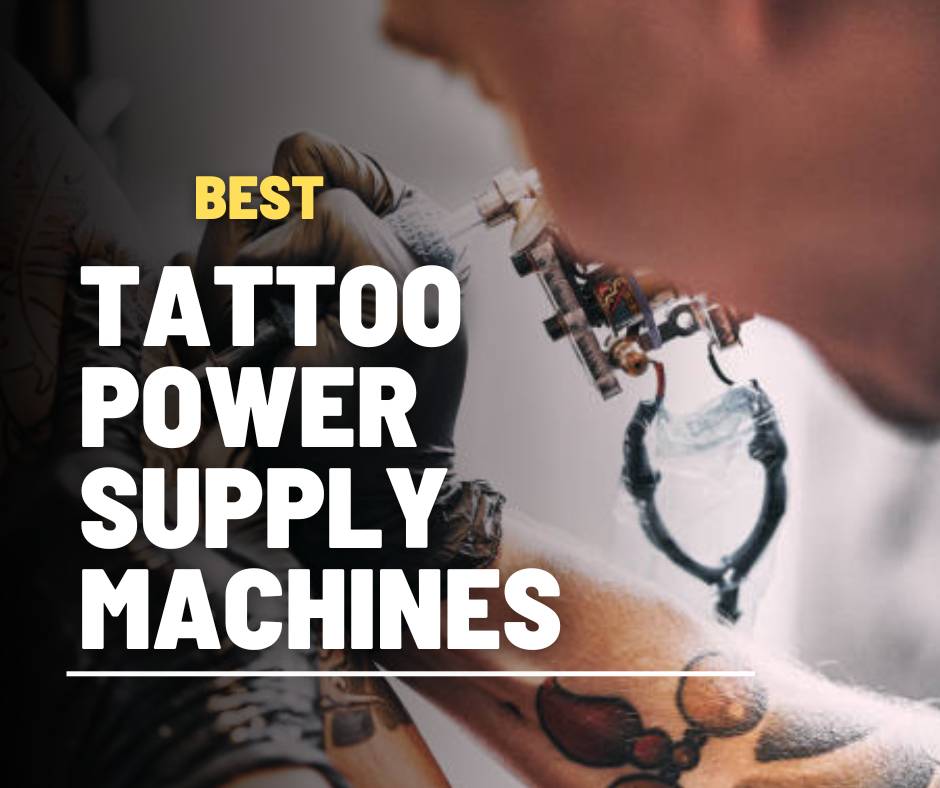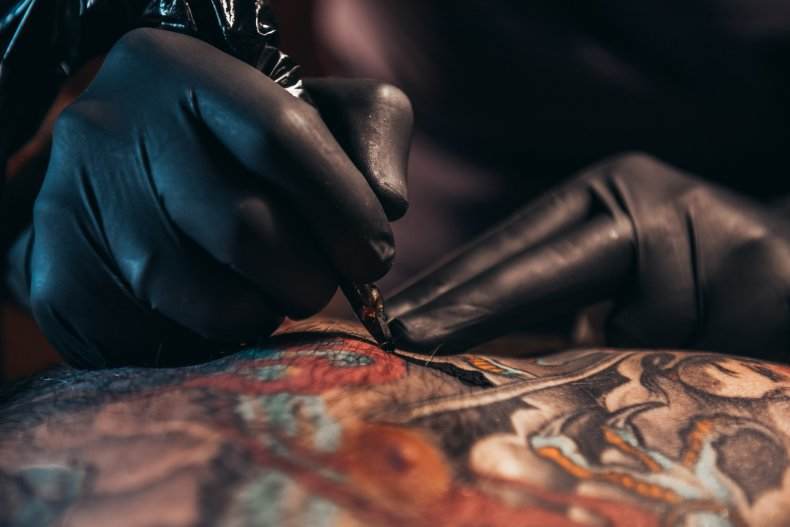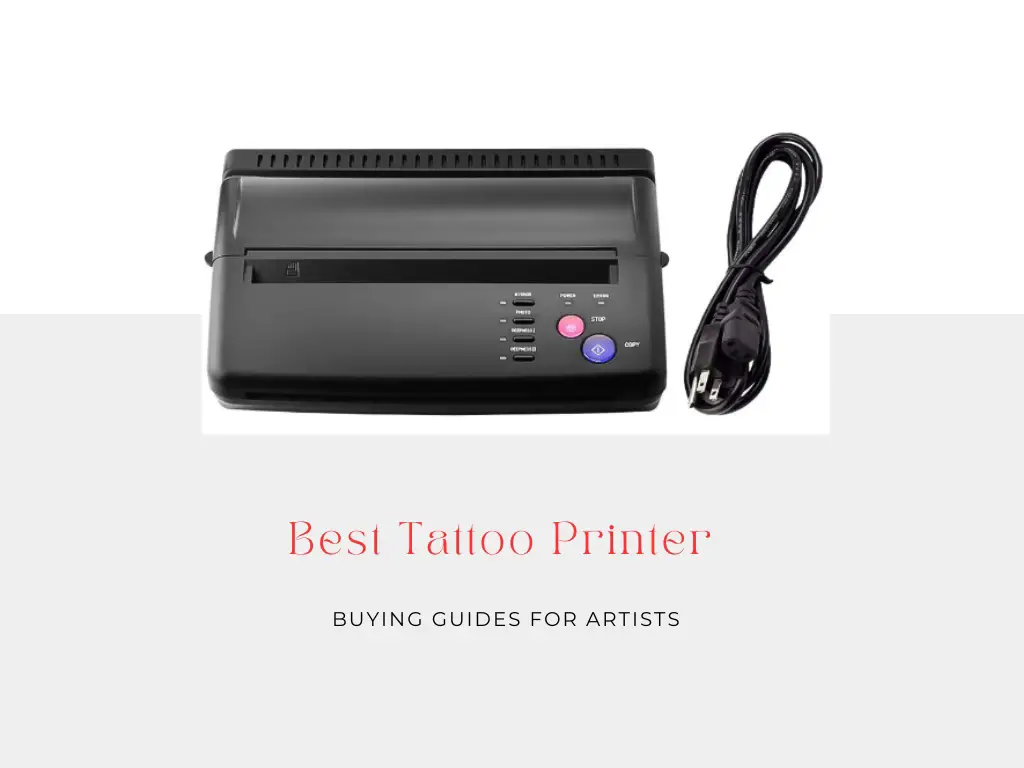One of the most critical decisions for a tattoo artist is which tattoo equipment to use. To choose the best equipment for you, it is vital to compare the various features offered by the rotary tattoo machine and the coil tattoo machine.
Before discussing some good tattoo power supply machines, let's discuss their advantages and disadvantages.
If we rank the best tattoo power supply machines based on their warranty, performance, especially for beginners, then these three will be excellent for you!
Recommended Products | warranty | Rating |
|---|---|---|
BRONC Professional Tattoo Power Supply | 1 Year | 4.5 |
Dragonhawk LCD Dual Tattoo Machine Gun Power Supply | 1 Year | 4.3 |
Critical Tattoo Power Supply CX1-G2 CX1G2 AUTHENTIC | 2 Years | 4.6 |
Pirate Face Tattoo Dual Digital Tattoo Power Supply with Foot Pedal
This product is designed for people who require a simple power supply. The building is of a high caliber and would fit any machine perfectly. It is compatible with both shader and liners. You may start tattooing by turning on your device with just one switch. The precision of this one is one of its strong aspects because it has a digital design. Additionally, a foot pedal is included, and because it is made of stainless steel, it has a distinctive appearance.
Pros
Cons
BRONC Professional Tattoo Power Supply Touch Screen Digital LCD for Tattoo Machines
With several useful features, the BRONC Professional Tattoo Power Supply is a good product. It has liner/shader presets with memory modes, and it may be operated with a foot switch in momentary or maintained modes. It has a broad input and output voltage range and offers enough power for different tattoo machines. Additionally, it resists water. If the customer is dissatisfied with the product, the manufacturer helps.
Pros
Cons
Cheyenne Tattoo Machine Power Supply, PU1
The PU1 power supply from Cheyenne works with any rotary or coil tattoo machine that is industry standard. Due to the jumpstart chip, they advise it for the Cheyenne Hawk. Thanks to its small form factor, it is perfect for traveling, not simply for sitting in a store. It is stylish and simple to clean. You can rapidly adjust the voltage thanks to its touchscreen digital display.
Additionally, you can alter the stroke frequency from 60 to 160 times per second. The producer provides a 12-month warranty.
Pros
Cons
Cheyenne Compact Power Supply PU4
The PU4 is a great option if you have a Cheyenne SOL tattoo machine. If you have the adapter cable, it is also compatible with tattoo machines from other manufacturers. The power supply has a magnetic bottom and a clip-on stand, allowing multiple mounting options. It also has a tiny form factor and is lightweight. The output varies from 4.7 to 12.5 V in steps of 0.1 V. It offers precise control, and the LCD lets you see the stitch frequency. It also contains a stopwatch for timing purposes.
The producer provides a 12-month warranty. With this tattoo machine, you can use a Rotary and Coil for your benefit.
Pros
Cons
Dragonhawk LCD Dual Tattoo Machine Gun Power Supply
This is a high-end, state-of-the-art power supply for one tattoo machine. With this apparatus, rotary and coil tattoo machines can both be used. With its durable construction, great vibration resistance, and high-quality performance in a fashionable case, this item is completely different in appearance.
A digital display and two inputs one for the clip cord and the other for the foot pedal—are located on the front panel. The voltage adjustments are made using a rheostat, just like the previous types.
Overall, this aluminum-made item is heavy and has a bold design. Given that it is rather heavy to carry, it is probably more appropriate for stationary operations. Since it only includes a voltage control feature, it is suitable for beginners. This power supply is ranked so highly since it is so inexpensive.
This DragonHawk should satisfy your demands if you’re looking for a dependable, straightforward, and reasonably priced option.
Pros
Cons
Tekpower TP3003D-3 Digital Variable Triple Outputs Linear-Type DC Power Supply
Despite not being designed primarily for connecting tattoo equipment, the laboratory power supply may be appropriate in some situations. They provide consistent power and are long-lasting. It is a tried-and-true choice. Due to its low cost, near indestructibility, and adaptability to your demands, the Tekpower TP3003D-3 would also be a great pick. For configuring the voltage and current, it has rotary switches.
Additionally, the power supply in this study is the only one with an output power of up to 30 volts. Its huge size is its main drawback. This laboratory version will be ideal if you intend to operate in the studio and search for the most robust tool.
Pros
Cons
Critical Tattoo Power Supply CX1-G2 CX1G2
It’s a good machine for beginners. The liner and shader types of tattoo machines have separate settings. As soon as you switch it off, the settings are saved. The block can also be managed without a pedal. A stand that can be screwed to the block and fastened to a metal surface with three magnets is included in the package and is quite useful while working. No matter the session’s length, the G2 power supplies can handle any coil or rotary tattoo machine on the market with controlled, continuous power.
The voltages are altered by the “up” and “down” buttons. The “left” and “right” buttons switch between the liner and shader machine modes. There is a button to turn on the pedal and sleep. When two buttons are pressed simultaneously, the function changes to “Hard Start”: first, the power supply works more quickly to start, then it transitions to steady operation. This tattoo power supply is incredibly adaptable, practical, strong, trustworthy, and high quality.
It is suggested that both novice and experienced tattoo artists buy it because it meets all their needs for a power supply.
Pros
Cons
Buying Guide
Power Source
Important! Before anything else, you must be aware of the power requirements in your nation. Although most power supplies are branded “100V NORTH AMERICA” or “220V EUROPEAN,” you are ultimately responsible for knowing the required voltage. It’s safe to suppose that you are one of the clever ones because you read before placing your order, but if you forgot, you might look at a helpful power output chart by country here.
Different Tattoo Power Supply Types
The digital power supply is the type you’ll see the most of. Although they can be found in various sizes and designs, digital power supplies always contain a digital display. If your machine starts to behave during a session, you can immediately identify if the power source is the problem because the digital display provides a simple reading to observe from a distance. More voltage, up to 18V and beyond, can typically be delivered using digital power supplies.
For wireless Supply
The most recent power sources available are wireless power sources. While wireless adapters have been available for some time, native wireless power sources are now beginning to appear on the market. You can connect these power supplies to your foot switch on any channel you wish; they don’t require antennas or long wires.
Type of Machine Matters
When purchasing a new power supply, it is essential to understand your devices to maximize performance. Because voltage varies so much by build, you should already know the ideal voltage range for each machine (e.g., your liner operates best between 6V and 8V). Grab a multimeter and check your power supply output if you have been operating your equipment within a specific range but see that it keeps increasing over time. You may be receiving fewer volts than you require.
Machine Size
Think about portability, weight, and size. Not all tattoo power supplies are created equal, so you don’t have to sacrifice power. Many businesses sell more compact units for people who don’t want to take up a lot of space at their shop or frequently travel as guest artists. Particular attention should be paid to the machine’s total weight and portability for touring artists.
Price
Recognize the cost. A tattoo power supply is available for as little as $40 or as much as $300–400. Consider all the aspects very carefully before choosing if the price is appropriate. There may be more than one dependable piece of equipment that fully satisfies your requirements. If so, you begin the elimination process using price.
Rotary or Coil
Now, you can use two different techniques. The rotary tattoo machine and the coil tattoo machine can both produce excellent tattoos. While the rotary tattoo machine employs a more delicate procedure, the coil tattoo machine uses an electromagnetic current to drive the armature bar.
Rotary machines are much lighter than coil machines since they run on motors, making them more comfortable to handle. Because rotary machines are lightweight, painters can work for extended periods at a single sitting without experiencing hand or finger pains, which lowers the likelihood of errors.
More Tips
When I utilize my coil machines, typically when I’m lining, I prefer to use an analog power supply. It doesn’t run out of charge and provides adequate power for my liners. I am OK with using it for large outlines and small one-off items because I’ve experienced fewer problems with my analogs over the years. I’ll probably use my analog power supply if the tattoo is only an outline or a grayscale image.
Disclaimer: Since I’ve had this analog power supply since I was an apprentice, this may be more of a nostalgic post than anything else.
Now, I’ll use my digital power supply if I’m utilizing my rotary machines or my Neuma hybrid (Which I’m currently using) because it has more power, and those machines can operate at much higher voltages than 14V regularly. Using an analog power supply with a maximum output of 15V when I could need much more to get my machines to perform at their best makes no sense.
Final Words
The optimal power source for your tattoo machine must be chosen. It guarantees that the voltage and precision control you need for your task is adequate. A digital power supply can simplify the task if you can plug in two machines at once.
Additionally, you will have mobility thanks to a wireless charge source. For more evaluations of the top tattoo supplies, check back soon. Here are some ideas regarding what tattoo power supply machine could benefit you as a beginner. I hope that it helped you a lot.

My name is James Dalton specialize in developing research-based content on the fashion & lifestyle industry. And has good experience in tattooing. Tattooing is my hobby and worked for some years as a tattoo artist.











